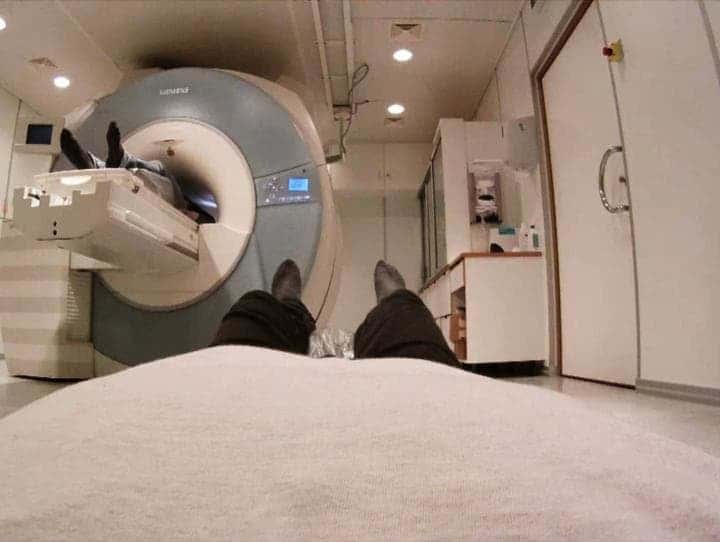Neuroscientists at the Karolinska Institute in Sweden have created an out-of-body illusion in participants placed inside a brain scanner to see what happens in the brain during this time and understand what are the brain parts responsible for our sense of position.

The idea of having a body placed somewhere in space is a sense we generally take for granted. However, to our brains, this is a monumental task which involves continuous analysis and integration of sensorial data. Studies in rats have shown that specific regions of the brain contain GPS-like ‘place cells’ that signal the body’s position – a finding which was rewarded with a Nobel Prize for Medicine in 2014.
But for the more complex human brain, this is still a mystery. In a new study, scientists created an out-of-body illusion in fifteen healthy participants placed inside a brain scanner. In the experiment, participants viewed themselves and the brain scanner from another part of the room. From the new visual perspective, the participant observes the body of a stranger in the foreground while their physical body is visible in the background. To further emphasize the illusion, a scientist touched the participant body with an object just as he was touching the stranger’s body, in full view of the participant – just like in another recent experiment, which made participants feel like they’re invisible.
“In a matter of seconds, the brain merges the sensation of touch and visual input from the new perspective, resulting in the illusion of owning the stranger’s body and being located in that body’s position in the room, outside the participant’s physical body,” says Arvid Guterstam, lead author of the present study.
The goal was to analyze the brain with scanners and see what’s happening as the illusion materializes. They then employed pattern recognition techniques to analyze the brain activity and managed to show a systematic connection between the information content in these patterns and the participants’ perceived vividness of the illusion. In other words, the participants’ brains dealt with the out-of-body experience the same way.
“The sense of being a body located somewhere in space is essential for our interactions with the outside world and constitutes a fundamental aspect of human self-consciousness,” says Arvid Guterstam. “Our results are important because they represent the first characterization of the brain areas that are involved in shaping the perceptual experience of the bodily self in space.”
The finding is important because it is a significant step forward in identifying what cells play the key role in our perceived self-location.
“This finding is particularly interesting because it indicates that place cells are not only involved in navigation and memory encoding, but are also important for generating the conscious experience of one’s body in space,” says principal investigator Henrik Ehrsson, professor at the Department of Neuroscience.






